Space
Sign up for our newsletter
We summarize the week's scientific breakthroughs every Thursday.
-
 Astronomy
AstronomyAstronomers scrutinized last year’s eclipse. Here’s what they’ve learned
Astronomers observed the 2017 total solar eclipse from the ground and the air, and found some never-before-seen features of the sun’s atmosphere.
-
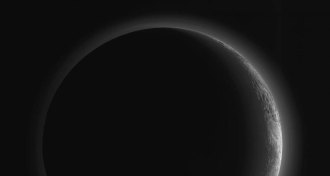 Astronomy
AstronomyPluto’s demotion ignores astronomical history
A historical review of asteroids’ planetary status suggests Pluto’s demotion was not justified.
-
 Astronomy
AstronomyPlasma rain in the sun’s atmosphere falls in surprising places
Scientists found rain in the sun’s corona where they didn’t expect it, which could help solve the mystery of why the corona is so hot.
-
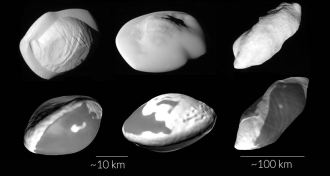 Planetary Science
Planetary ScienceSatellite smashups could have given birth to Saturn’s odd moons
Nearly head-on collisions between icy moonlets might be responsible for the peculiar shapes of some of Saturn’s moons, computer simulations suggest.
-
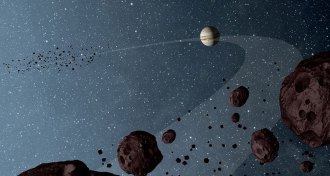 Astronomy
AstronomyMaverick asteroid might be an immigrant from outside the solar system
A space rock’s backward orbit could be a hint of unusual origins.
-
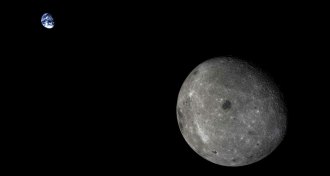 Planetary Science
Planetary ScienceChina is set to launch a satellite to support a future lunar rover
China is set to launch a satellite to support a future lunar rover that will make the first-ever visit to the farside of the moon.
-
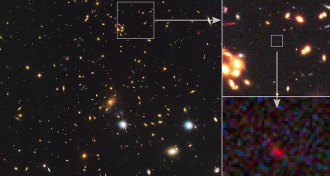 Cosmology
CosmologyThese stars may have been born only 250 million years after the Big Bang
Scientists find evidence that stars were forming just 250 million years after the universe was born.
-
 Animals
AnimalsReaders amazed by Jupiter discoveries, giant viruses and more
Readers had questions about the latest findings of Jupiter, giant viruses being recognized as a new kingdom of life and tardigrade poop.
-
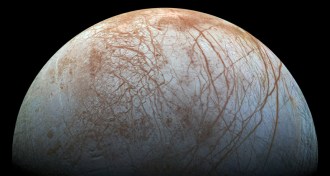 Planetary Science
Planetary ScienceAnother hint of Europa’s watery plumes found in 20-year-old Galileo data
A fresh look at old data suggests that NASA’s Galileo spacecraft may have seen a plume from Jupiter’s icy moon Europa in 1997.
-
 Astronomy
AstronomyThe recipes for solar system formation are getting a rewrite
A new understanding of exoplanets and their stars is rewriting the recipes for planet formation.
-
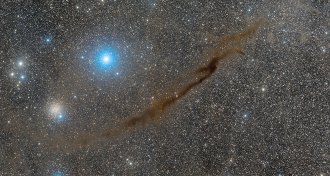 Astronomy
AstronomyFirst 3-D map of a gas cloud in space shows it’s flat like a pancake
An interstellar gas cloud dubbed the Dark Doodad Nebula looks like a wispy, thin cylinder. But it’s actually a flat sheet.
-
 Astronomy
AstronomyGaia delivers a trove of data revealing secrets of the Milky Way
Astronomers are already using Gaia’s new information to estimate the galaxy’s mass, the diameter of exoplanets and more.